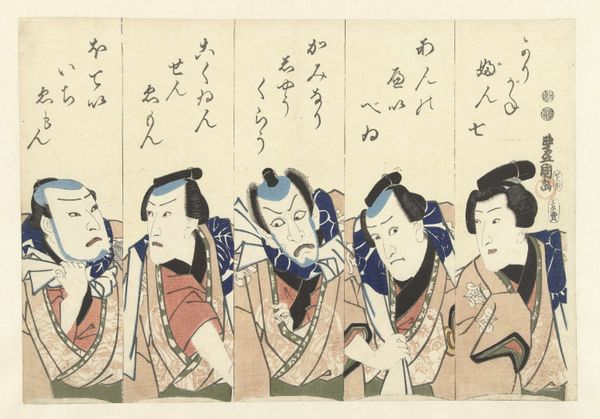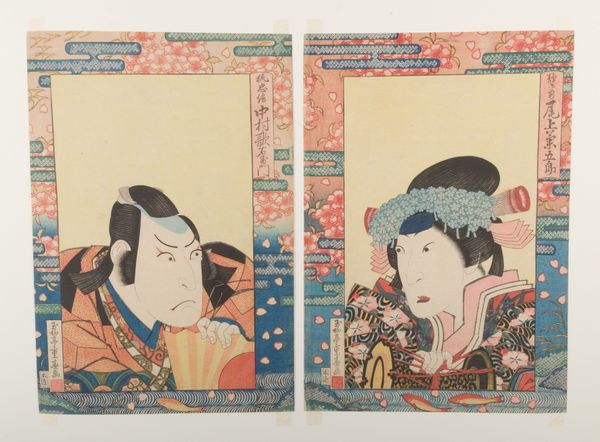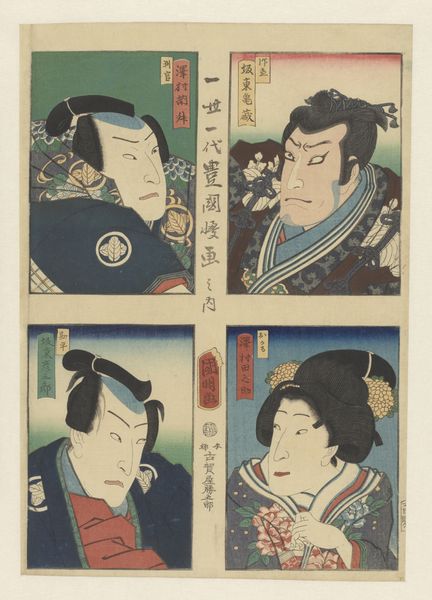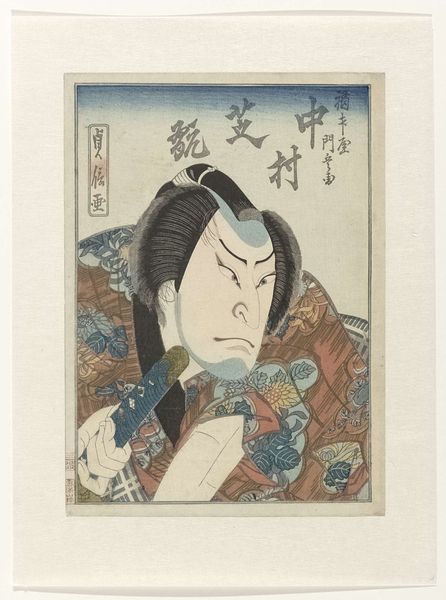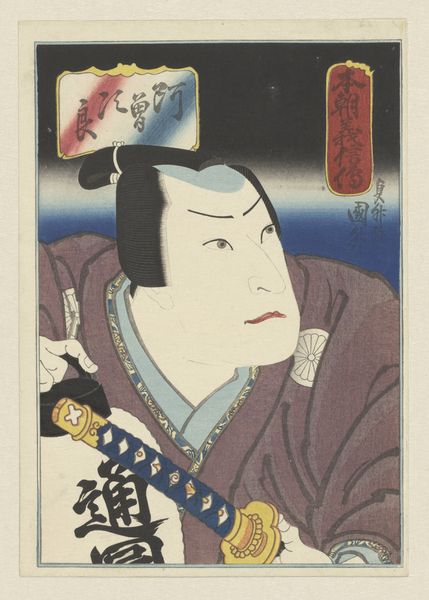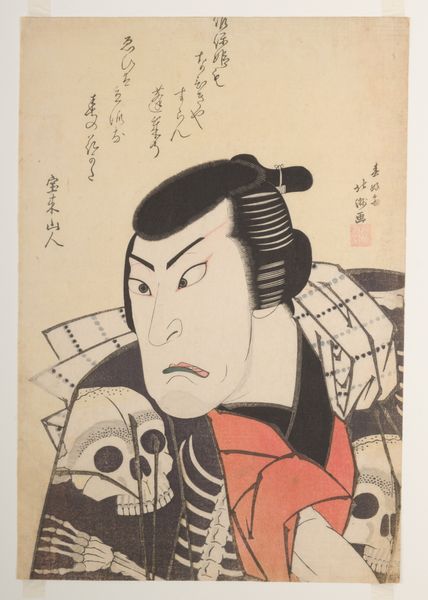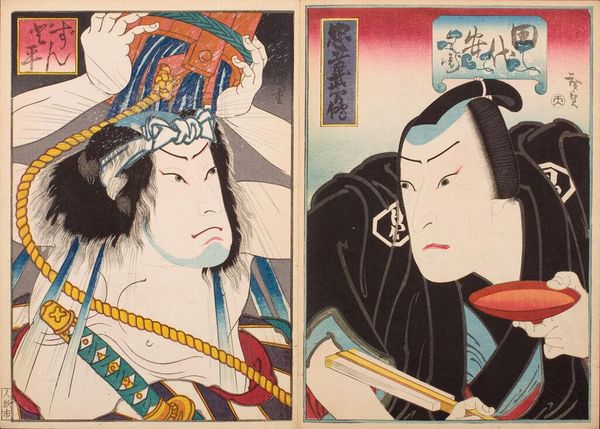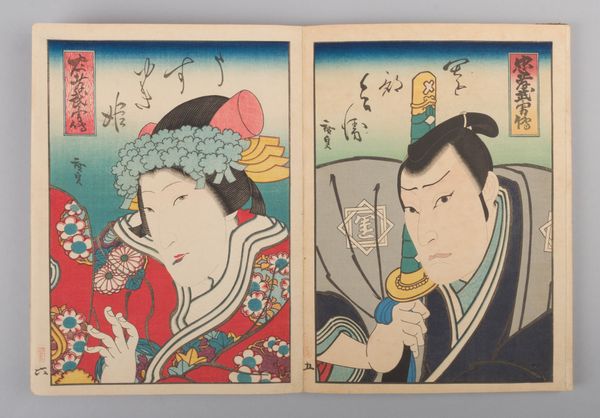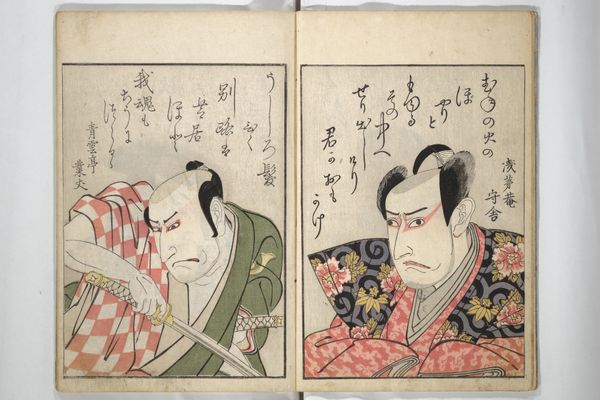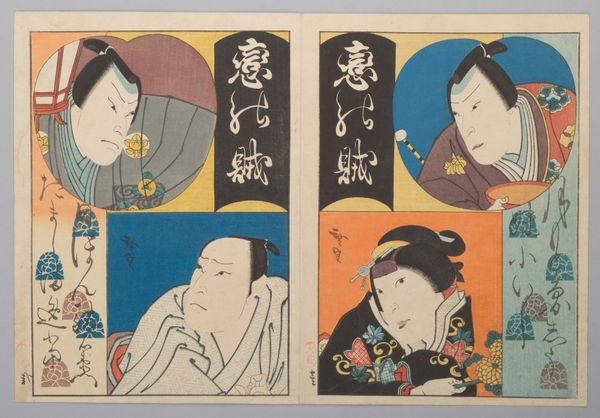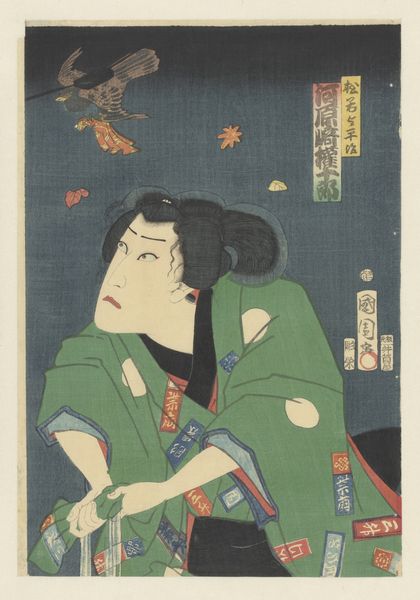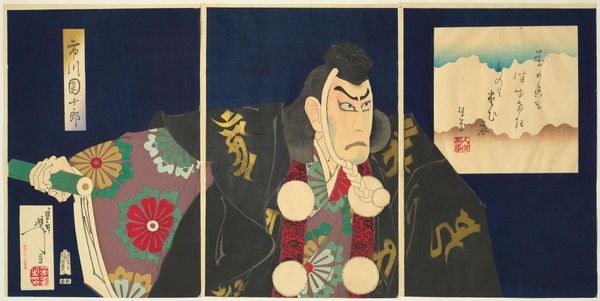
Kataoka Gadō ll and Arashi Rikaku ll as the Rokubu Pilgrims c. 19th century
0:00
0:00
print, ink, woodblock-print
#
portrait
# print
#
ukiyo-e
#
japan
#
ink
#
woodblock-print
Dimensions: 9 1/4 × 12 15/16 in. (23.5 × 32.8 cm) (image, vertical chūban diptych)
Copyright: Public Domain
Editor: This vibrant diptych, “Kataoka Gadō ll and Arashi Rikaku ll as the Rokubu Pilgrims” by Utagawa Hirosada, dating to the 19th century, really caught my eye. It's a woodblock print with rich colors. What's fascinating is the serious, almost somber, expression on their faces. What can you tell me about this work, considering its historical context? Curator: These portraits offer a glimpse into the dynamic world of Kabuki theatre and its intersection with Japanese print culture. Consider the subjects - actors portraying pilgrims. How do you think this representation reflects or shapes public perceptions of religious practice during this period? Editor: That's interesting. I guess seeing actors in those roles might blur the lines between performance and piety? Curator: Precisely. Ukiyo-e prints like these were mass-produced and widely circulated. This makes them significant not only as artistic objects, but also as carriers of social meaning. Were these images purely for entertainment or could they have also reinforced social norms? Editor: Hmm, I suppose the fame of the actors themselves might add another layer. People are interested in their favorite performers. Curator: Absolutely! And the composition itself—two panels side-by-side—what message does that grouping send? Do you think the relationship between the performers on and off stage adds context? Editor: It’s like a behind-the-scenes look maybe? Considering it's a print, I am assuming it made the representation accessible to more people. It almost democratizes access to this image of performers and performance. Curator: Well said. The Ukiyo-e tradition really gave the masses a voice, didn't it? They shaped and mirrored culture as well. Editor: That's insightful. I'm now appreciating it beyond its visual appeal, as a piece deeply embedded in social history. Curator: Exactly! And those are the layers that enrich our understanding.
Comments
No comments
Be the first to comment and join the conversation on the ultimate creative platform.
